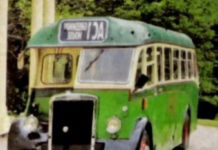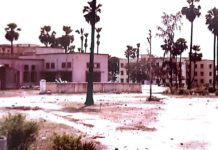Our Homes – The Govt. Tenements – Gurukul Settings
It is a daunting assignment for anyone to set up an Engineering College in the wilderness, in three months. The College needed to be functional from day one, with infrastructure for lectures, workshops, laboratories, and drafting and most importantly, a hostel for the incoming 250 students.
The first hostel was located in Nakkalagutta in Hanamkonda (Hanamakonda as it is known now). Hanmakonda houses all the government offices of Warangal district. Two and three room tenements of the ‘Low Income Group Housing’ (LIGH Tenements) were vacant. The District authorities allotted these tenements to house the first batch students and staff.
Each two room tenement had two rooms, a small kitchen and a toilet. 4 students were allotted to each tenement (2 from Andhra Pradesh, 1 from any of the other southern states and 1 from the rest of India). Two students shared the inner room. One student occupied the outer room (because it was also the access to the inner room). The fourth student occupied the kitchen. Students hailing from the north of India were clubbed with those hailing from Andhra Pradesh and with those hailing from the other southern states.
The three made it like Tootifruiti ice cream. The common language was immediately moved from English to Hindi. It took a lot of effort to understand individual problems and equally appreciate limitations. We were taught to hold our lungi well. In turn, both our roommates learnt to wear a pajama easily. Lasting friendships were formed because of having been put together. The initial reservations arising out of differences in language, food habits and region were overcome within a few weeks.
The Hostel Office was located in one tenement
Shree. K. V. N. Appa Rao was our warden, as well as the ‘One-Man Reception Committee’ for incoming students. Two tenements were furnished with benches and tables and served as the dining area. Initially, one tenement was converted for use as the hostel kitchen. Within a couple of months, an additional, covered shed was constructed as an extension to provide more room for the kitchen.
The three room tenements were allotted to the coreteam staff members, who had their families with them. Single staff members shared their accommodation either in the three-roorn tenements, wherever possible. Others found accommodation in nearby localities.
The LIGH tenements had been previously used to house severely sick cholera patients of the town. The first job for the core team, therefore, was to have the tenements thoroughly disinfected and cleaned. Barrels of phenyl were used to disinfect the premises. The passages had to be cleared of wild growth and bush.
We, the students, were totally unaware of these facts until we heard our ‘Gurus’ tell us at the recently held ‘First Batch Golden Jubilee Reunion’ in February 2014.
The tenements were in a total state of disrepair. Proper intra-site roads did not exist. There was no street lighting. It was raining regularly. The mud roads were slushy (ankle deep mud). Crawling creatures had a free run on the premises. Prof. Muthukrishnudu addressed us and asked us to bear With the situation for a month. He promised to set things right within a month.
Repair works were initiated immediately. Streetlights were installed and were functional. Macadam roads were laid inside the hostel complex. Sports equipment was made available. . Basic playground facilities came up. By the middle of October 1959, the hostel premises had been transformed from a primitive state to a ‘livable’ state.
The area behind the Hanmakonda Hostel was open territory with wild bush, rock outcrops, arid terrain trees and some Seethaphal (Custard apple) trees. Occasional sightings of wild animals had been reported. During the initial months, the hostel authorities had watch and ward together with strategically located fires burning at night, around the outer periphery of the hostel.
This article is the three in a series of many, compiled by RECW’s 1964 batch for the Coffee Table Book, published in 2014. We thank Mr. S. Sampath Iyengar and his team (Batch of 1964) for giving us permission to share this with the NITW community. We also thank Professor CSRK Prasad for helping us make this happen.





